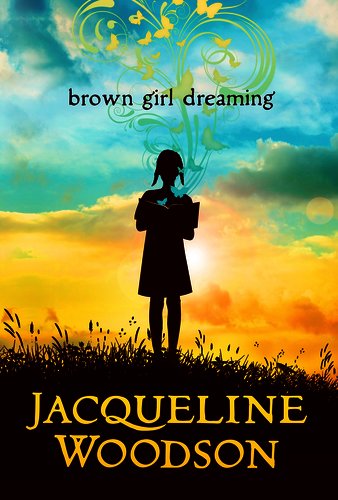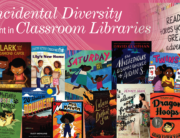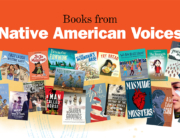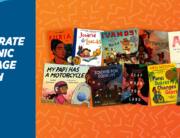Grades 5-10, Lexile 990
Poignant, powerful poems fill the pages of Jacqueline Woodson’s Brown Girl Dreaming. In early November, Booksource Book Club unanimously voted to read the National Book Award contender, and most, if not all of us, have been moved by Woodson’s words—words inspired by her childhood growing up in two different worlds, the South and New York City. By the time we met to discuss the book, Brown Girl Dreaming had indeed been honored with the prestigious award, and we wholeheartedly agreed.
From tears in the first few pages (that continue through to the end) to parallel experiences growing up listening to Sly and the Family Stone, our diverse group of book club members found both personal and classroom connections throughout this compelling novel in verse.
One of the biggest surprises in Woodson’s biography is how much vivid imagery, passionate emotions and heartbreaking detail she conveys in such sparse and simple text. We  discussed the difficulty it takes to make each word count in this format. But we couldn’t imagine a better way to share Woodson’s story. Not only because the text style mirrors Woodson’s depiction of how she learned to write—by copying lyrics from songs she heard on the radio, but also because the verse format makes difficult memories of discrimination, divorce and death both very impactful and easier to handle, especially for middle grade readers.
discussed the difficulty it takes to make each word count in this format. But we couldn’t imagine a better way to share Woodson’s story. Not only because the text style mirrors Woodson’s depiction of how she learned to write—by copying lyrics from songs she heard on the radio, but also because the verse format makes difficult memories of discrimination, divorce and death both very impactful and easier to handle, especially for middle grade readers.
Woodson was able to weave historical and cultural details throughout her memoir, which caused more than one member of our group to share, “That was my childhood”. One of us reminisced that while St. Louis was far different than either Woodson’s South or Woodson’s New York, she listened to the same music and was aware of the same shift in social consciousness that Woodson describes in her book. During that time, American culture was changing so fast, and just like Woodson’s mom, St. Louis parents were hesitant about letting their kids drive right in to all these new changes.
Looking back at this time in history prompted us to discuss contemporary events. Woodson’s story could be written by a young girl growing up today. This understanding makes Woodson’s book an excellent mentor text for writing poetry and personal narratives. It is also a good text to get students talking about social issues as well as their personal passions.
This is a book that brings together several types of literary genres and styles: biography, memoir, novel in verse and present-tense narration. Many of these can be deterrents for some readers, but even the most hesitant or reluctant reader can find a connection in Brown Girl Dreaming, because this book isn’t just a coming-of-age tale, a historical narrative or a simple story about a girl. This is a book about owning all the stories that make you you and finding your voice along the way.
Read School Library Journal’s recent interview with Jacqueline Woodson here.







Leave A Comment